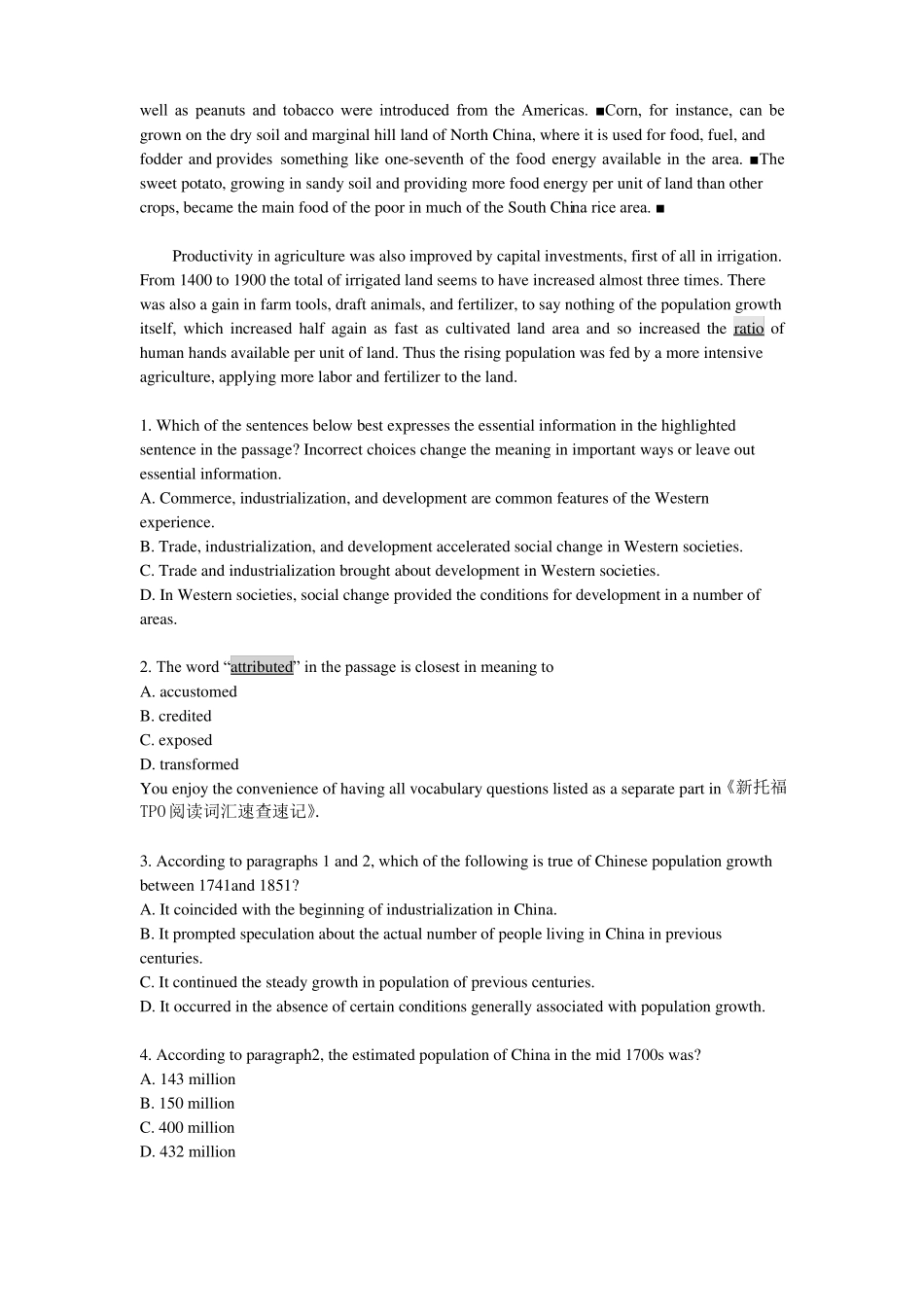TPO-48Chinese Population GrowthIncreases in population have usually been accompanied (indeed facilitated) by an increase intrade. In the Western experience, commerce provided the conditions that allowed industrializationto get started, which in turn led to growth in science, technology, industry, transport,communications, social change, and the like that we group under the broad term of “development.”However, the massive increase in population that in Europe was at first attributed toindustrialization starting in the eighteenth century occurred also and at the same period in China,even though there was no comparable industrialization.It is estimated that the Chinese population by 1600 was close to 150 million. The transitionbetween the Ming and Qing dynasties (the seventeenth century) may have seen a decline, but from1741 to 1851 the annual figures rose steadily and spectacularly, perhaps beginning with 143million and ending with 432 million. If we accept these totals, we are confronted with a situationin which the Chinese population doubled in the 50 years from 1790 to 1840. If, with greatercaution, we assume lower totals in the early eighteenth century and only 400 million in 1850, westill face a startling fact: something like a doubling of the vast Chinese population in the centurybefore Western contact, foreign trade, and industrialization could have had much effect.To explain this sudden increase we cannot point to factorsconstant in Chinese society butmust find conditions or a combination of factors that were newly effective in this period. Amongthese is the almost complete internal peace maintained under Manchu rule during the eighteenthcentury. There was also an increase in foreign trade through Guangzho...


